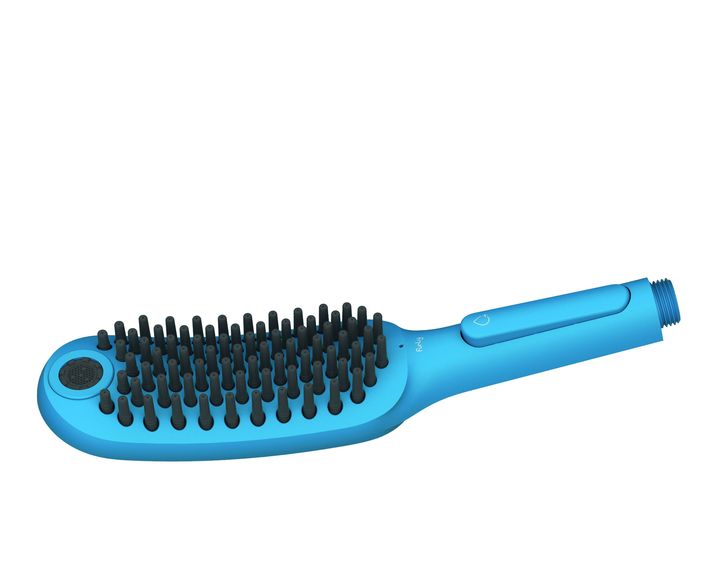
Additive manufacturing enabled the development of a revolutionary device for cleaning dogs.
While dogs are almost always a fun pet to have around the home, they come with some obligations. One of these is to keep them clean.
Unfortunately, many dogs are not keen on being bathed, and some are actually terrified of the prospect. If only there were a way to make the experience more desirable, and hopefully encourage the dog to participate more positively.
There is a way, and it’s the furly dog shower head.
While most typical shower heads you’d encounter are rather simple devices, that’s not the case with the furly upon a deeper look. It has been specifically designed to address the common problems with dog bathing.
One key feature is that you can shut off the water flow on the shower head itself, rather than having to reach around to a faucet. This means you can operate the furly with one hand, while holding the pet in the other.
Perhaps the most important feature is the nozzles themselves. They’re designed to protrude, and this transforms the feel of the shower head into more like a very soft brush. This means the dog feels like its being petted, rather than washed. In other words, you “pet your dog clean”.
The idea is that by providing a familiar experience, the dog will quickly learn that it could be fun to have a bath. That attitude could vastly simplify the otherwise challenging job of convincing the dog to get in a tub.
But how did this unusual shower head design come to be? It turns out it’s an interesting story involving 3D printing.
The folks behind the furly, the Hansgrohe Group in Germany, are long-time makers of sanitary fittings, including shower heads. They wanted to solve the dog-bath problem using modern technology.
They tasked their “Innolab” to develop a solution. Over a period of only five months they were able to go from the initial concept to a viable and sellable product.
Of course they used 3D printing to provide prototypes, but they went a lot further by taking advantage of the technology’s ability to produce complex geometries. Jochen Armbruster, Head of CA-Tools & Prototyping at the Hansgrohe Group, explained:
“We were able to integrate functionality directly into the component and significantly reduce the number of distinct parts required.”
This allowed them to develop a design that was more complex in geometry, but far less costly to assemble.

However, they had a problem. Because the furly would be attached to the public water system, they had to obtain permits that ensured the shower head was made from food-safe material.
The material they were using was EOS’ PA 2200 nylon material. EOS explained what happened next:
“Thanks to close collaboration between Hansgrohe and EOS, a drinking water certification was successfully obtained for the additive manufacturing material: EOS submitted samples of the powder-based material PA 2200 and the relevant extracts of the patented recipe created by EOS to several laboratories. Compatibility with drinking water was confirmed with no exceptions, meaning that PA 2200 could now be used in sanitary fittings for the very first time.”
Note that this means PA 2200 can be used for other water-based applications in the future now that this certification has been obtained.
Hansgrohe 3D printed 5,000 units on an EOS P 396 3D printer in PA 2200.
The Furly project succeeded, but seems to have hit a turning point for Hansgrohe. EOS explains:
“Hansgrohe has repeatedly taken advantage of industrial 3D printing since 2003, but previously only for single parts. With the Hansgrohe furly shower for dogs, the company not only successfully produced a market-ready product by 3D printing in series, but also contributed to advancing technological research together with EOS. The knowledge gained from the project and the efficient ‘fail fast, learn fast’ culture will be incorporated into future innovations from the Black Forest valve and shower manufacturer.”
Even if you’re using 3D printing, there may be more advanced methods of using the technology. The most benefit occurs when fully leveraging the ability to produce complex geometries, and that’s what Hansgrohe did with the Furly.
And it seems they’ll be doing the same in future projects.
